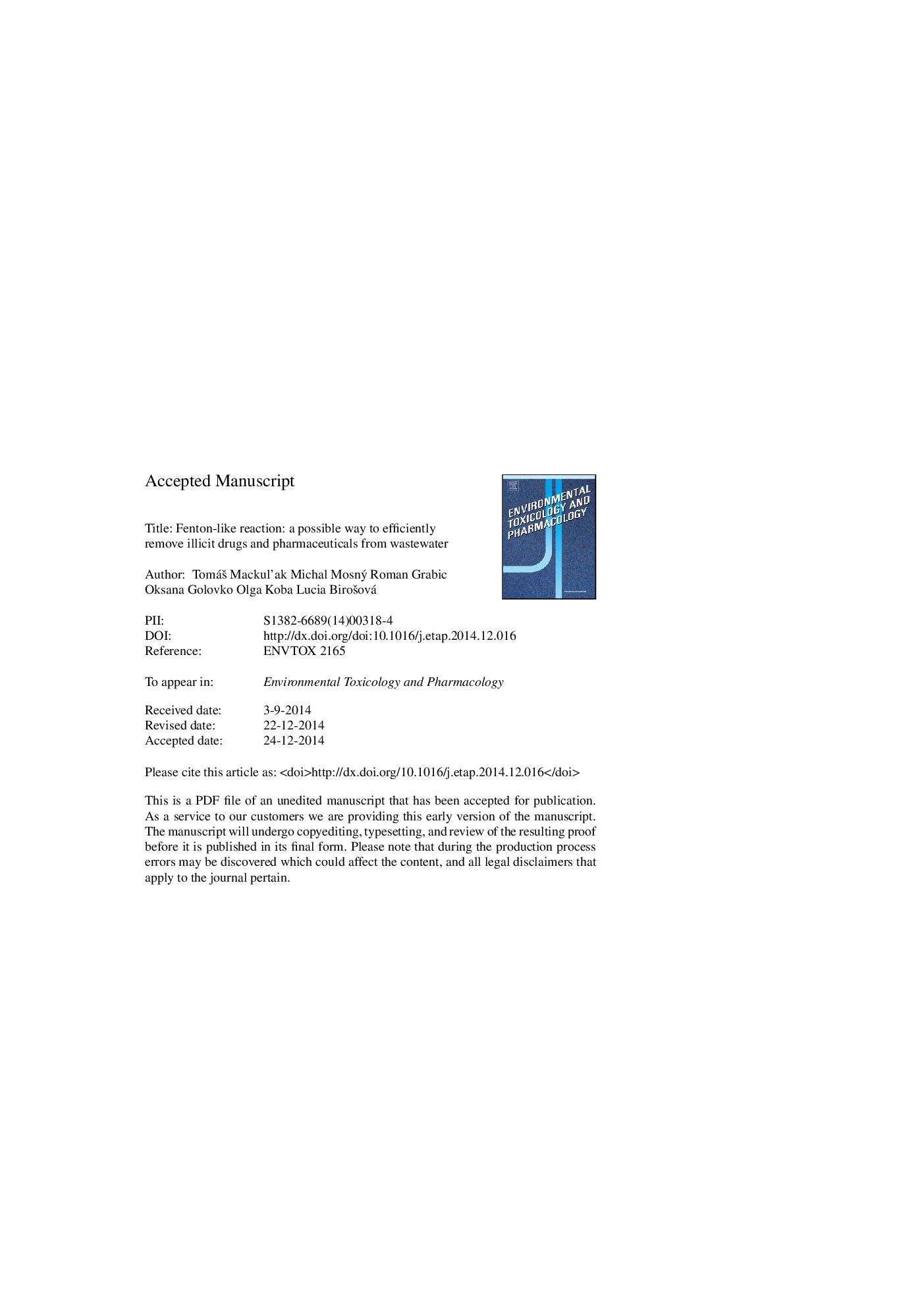| Article ID | Journal | Published Year | Pages | File Type |
|---|---|---|---|---|
| 5848885 | Environmental Toxicology and Pharmacology | 2015 | 17 Pages |
Abstract
We analyzed 13 psychoactive pharmaceuticals, illicit drugs and their metabolites in wastewater treatment plant influent and effluent and the possibility of their degradation by biological and chemical processes. Tramadol (413-853Â ng/L) and methamphetamine (460-682Â ng/L) were the most concentrated compounds in the wastewater in winter and summer, respectively. A significant decrease in the concentration of tramadol in wastewater was measured during the summer. The lowest efficiency was observed for tramadol, venlafaxine, citalopram and oxazepam (â¼10%) and the highest efficiency was observed for amphetamine and THC-COOH (â¼80%). The efficiency of compound degradation via the Fenton reaction, a modified Fenton reaction and different degradation (by algae, wood-rotting fungi and enzymes at influent versus effluent) was determined. The Fenton reaction and its modification were efficient at eliminating these substances in comparison with the tested biological processes.
Related Topics
Life Sciences
Environmental Science
Health, Toxicology and Mutagenesis
Authors
TomáÅ¡ Mackuľak, Michal Mosný, Roman Grabic, Oksana Golovko, Olga Koba, Lucia BiroÅ¡ová,
